
The U.S. Department of Energy (DOE) is ready to go even deeper in its fight against climate change. DOE Secretary Jennifer M. Granholm, alongside Interior Secretary Deb Haaland, have announced the Floating Offshore Wind Shot™, a new interagency initiative led by the U.S. Departments of Energy, the Interior, Commerce, and Transportation to grow the amount of renewable energy available in the United States by driving the development of an untapped, clean energy resource—floating offshore wind energy.
 The Floating Offshore Wind Shot aims to develop cost-effective technologies for deep waters and to bring power to onshore areas of high demand. This process will create jobs in construction, manufacturing, and operations, expand supply chains, and ensure environmental sustainability and ocean co-use. The overarching goal is to help revitalize port and manufacturing communities while deploying large amounts of reliable, clean power.
About two-thirds of the U.S. offshore wind energy potential exists over waters too deep for today’s fixed-bottom wind turbine foundations that are secured directly to the sea floor. While floating offshore wind technology is able to access these deeper waters, the commercial cost of the first floating offshore projects are estimated to be more than 50% higher than those of fixed-bottom offshore wind.
The Floating Offshore Wind Shot sets an ambitious goal to reduce the cost of floating offshore wind by at least 70% to $45 per megawatt-hour by 2035, while promoting an equitable clean energy transition and creating jobs and economic opportunities for U.S. communities.
To move toward the Floating Offshore Wind Shot goal, DOE today launched almost $50 million in research initiatives:
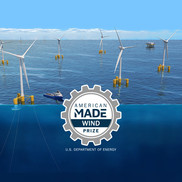
As a part of DOE’s American-Made Challenges series, WETO is funding its first ever prize! The FLoating Offshore Wind ReadINess (FLOWIN) Prize is a three-phase, $6.9 million competition designed to pave the way for cost-effective domestic manufacturing and deployment of commercial-scale floating offshore wind energy technologies in U.S. waters. Competitors will help develop a domestic supply chain and accelerate market readiness of U.S. floating offshore wind energy designs.
Eligible FLOWIN Prize teams must have an existing floating offshore wind substructure design and include members with expertise in wind energy technology. Learn more at the American-Made website, and register for the informational webinar on Sept. 22, at 11 a.m. ET.
|
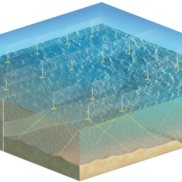
Funded by the Bipartisan Infrastructure Law, the National Renewable Energy Laboratory (NREL) launched this 3-year, $3 million project to develop a set of modeling tools to help industry and researchers design commercial-scale floating offshore wind farm arrays in U.S. waters, including their anchors, mooring lines, and subsea power cables.
By developing a design toolset and reference designs for large-scale U.S. floating offshore wind farms, the Floating Offshore Wind Array Design project will inform design decisions and help ensure cost-efficient and responsible deployment.
|
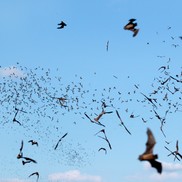
DOE’s WETO and the Bureau of Ocean Energy Management (BOEM) announced the selection of the Electric Power Research Institute (EPRI) to receive $1.6 million to conduct bat acoustic monitoring at fixed and mobile sites along the West Coast.
The goal is to better understand the environmental conditions likely to attract bat activity, with a focus on potential wind energy development areas. This project is co-funded by DOE and BOEM, and resulted from a funding opportunity for which selections were originally announced in October 2021.
|
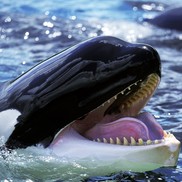
The National Offshore Wind Research and Development (R&D) Consortium, which was established with funding from DOE, has selected five new projects to receive a total of $3.5 million. Two projects, led by Saildrone and NREL, will monitor protected marine mammals and design floating offshore wind arrays to be compatible with fishing.
Three projects, led by the University of Michigan, Clarkson University, and Rutgers University, will improve the resiliency of subsea power cables and maintain grid stability with increasing contributions of offshore wind power.
|
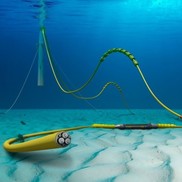
DOE’s Pacific Northwest National Laboratory (PNNL) will conduct a literature review of West Coast offshore wind transmission-related studies to date, covering regions along the California, Oregon, and Washington coastlines.
This literature review and gaps analysis will guide future research investments that address transmission needs for offshore wind deployment on the West Coast and is based on prior and ongoing analyses as well as western state policies, BOEM leasing activities, and perspectives from transmission system operators and planners in the Western Interconnection.
|
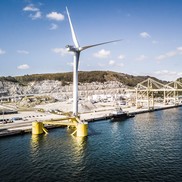
Funded by the Bipartisan Infrastructure Law and led by NREL, this study will help to reduce key infrastructure challenges by developing a strategically designed West Coast ports network, while also identifying upgrades needed to deploy commercial-scale floating offshore wind energy technology.
This collaborative effort will help inform investments in ports in West Coast states, thus enabling the domestic manufacturing and deployment of components needed for efficient floating offshore wind installation.
|
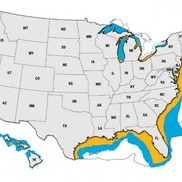
The National Renewable Energy Laboratory’s updated Offshore Wind Resource Assessment characterizes the nation’s vast offshore wind energy potential, taking into consideration the latest technology advancements and the improving economics of offshore wind energy in both moderate resource sites and deeper waters.
Across eight contiguous U.S. geographical locations, this assessment identifies 1.5 terawatts of resource potential for fixed-bottom wind farms and 2.8 terawatts for floating offshore wind farms, representing notable regional and national opportunities.
|

DOE’s Advanced Research Projects Agency-Energy (ARPA-E) intends to announce $31 million in funding through phase two of its Aerodynamic Turbines, Lighter and Afloat, with Nautical Technologies and Integrated Servo-control (ATLANTIS) program.
ATLANTIS II—which is the second phase of the ATLANTIS program—will focus on experimental testing in ocean, lake, and tank and tunnel environments to further develop new technology for floating offshore wind turbines.
|
Clean Energy Champions
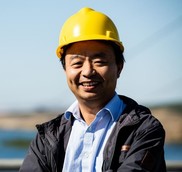
As a PNNL engineer, Daniel Deng is focused on mitigating potential environmental effects of wind energy. More specifically, Deng develops tiny radio-frequency transmitters to help monitor the behavior of birds and bats around wind turbines, with the ultimate goal of minimizing interaction. When asked what his magical wind energy power is, he responds humbly: “I am not sure if it is due to my ‘magical power,’ but I feel so lucky to be a part of the wind energy community because I am passionate about renewable energy and environmental protection.”
It sounds like his magical power is his passion, if you ask us. Get more details on Deng and check out more PNNL Clean Energy Champions.
|
Events
Webinars: Sep 15–29, 2022
Join the U.S. Department of Energy’s Office of Energy Efficiency and Renewable Energy (EERE) for a weekly virtual career fair, the STEMtember Sessions: Careers in Clean Energy, a networking opportunity during which EERE team members will discuss their diverse roles in renewable power, energy efficiency, and business operations. Come with questions and get ready to learn about how you can help build a clean energy future as a Clean Energy Champion. Register today!
Conference: Sept. 20–22, 2022, Newark, DE
Building on the success of the 2019 conference, the 2022 conference will reunite the North American Wind Energy Academy Symposium and the International Conference on Future Technologies in Wind Energy (WindTech) while broadening the 2019 vision to explore themes of grid integration and the social science of wind energy development. More information can be found on the event website.
Webinar: Sept. 21, 2022, 4 p.m. ET
Working Together to Resolve Environmental Effects of Wind Energy (WREN) is hosting a short, instructional webinar for its new online Wind Energy Monitoring and Mitigation Technologies Tool. To register, visit the WREN's website.
Forum: Sept. 21–23, 2022, Pittsburgh, PA
DOE is partnering with Carnegie Mellon University to launch and host the 2022 Global Clean Energy Action Forum, which will directly follow the UN General Assembly. Clean energy leaders from around the world will unite to accelerate the clean energy transition while responding to global security needs. This event will feature U.S. Secretary of Energy Jennifer M. Granholm, CEOs, and clean energy experts participating in a variety of events, including a high-level plenary session, technical roundtables, a clean energy technology showcase, and more. Visit the Global Clean Energy Action Forum website for more information.
Webinar: Sept. 22, 2022, 11 a.m. ET.
WETO’s FLOWIN Prize is designed to pave the way for cost-effective domestic manufacturing and deployment of commercial-scale floating offshore wind energy technologies in U.S. waters. Competitors will help develop a domestic supply chain and accelerate market readiness of U.S. floating offshore wind energy designs. Learn more at the American-Made Website, and register for the informational webinar.
Workshop: Oct. 17–20, 2022, Albuquerque, NM
The workshop brings together wind industry experts, wind farm stakeholders and operators, manufacturers, and researchers to address the major topics for wind turbine blades, facilitate interaction and networking among the attendees, and identify future technology pathways. For more information, visit the Sandia National Laboratories website.
Conference: Oct. 18–19, 2022, Providence, RI
The American Clean Power Association is hosting the Offshore WINDPOWER conference, which will feature panels, presentations, workshops, and poster sessions focusing on the future of offshore wind energy. Stop by the DOE booth to learn about its offshore wind research and newest initiatives. Find more information on the event website.
Conference: Dec. 5–6, 2022, Boston, MA
This 2-day conference will showcase the National Offshore Wind R&D Consortium’s impressive project portfolio, featuring keynote talks and project presentation panels organized around technical challenge areas. If you can’t make it to Boston’s Northeastern University for the event, tune in virtually on Hopin!
In Case You Missed It
|